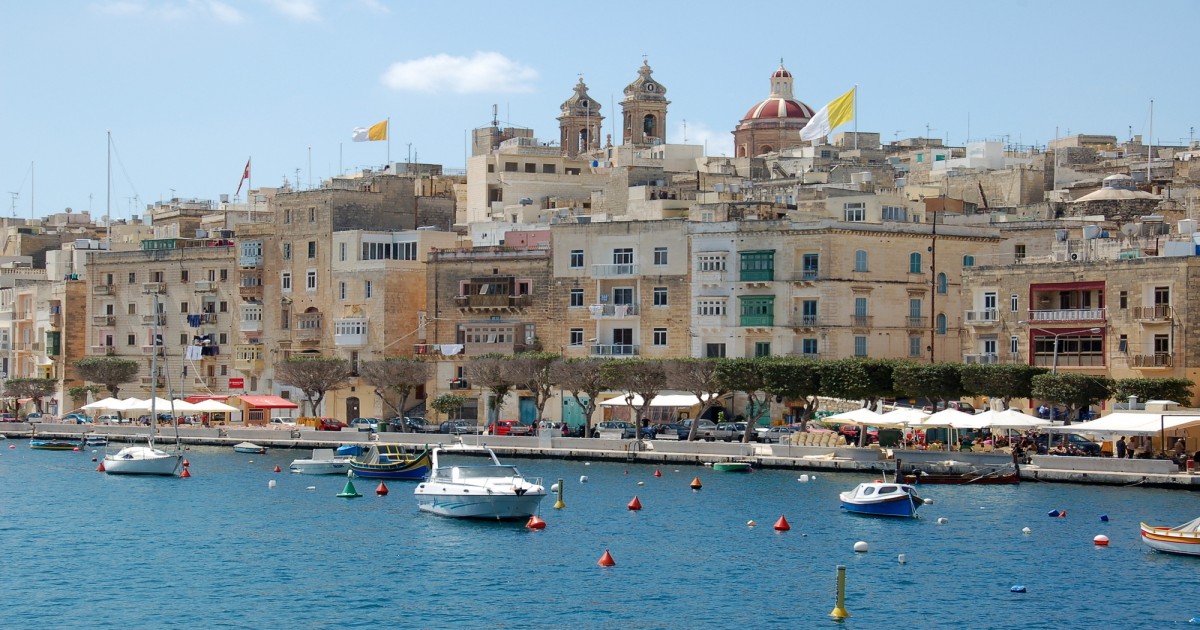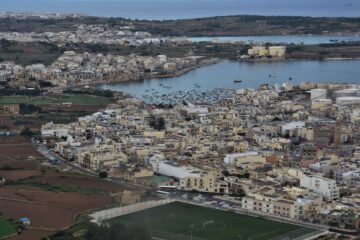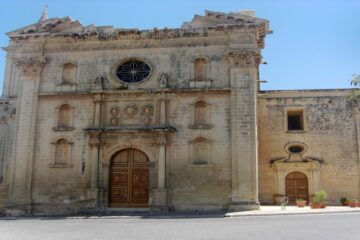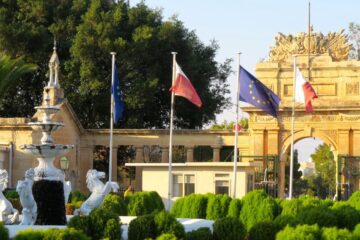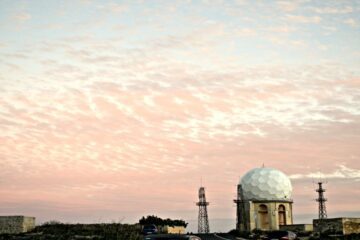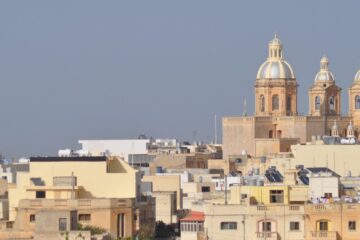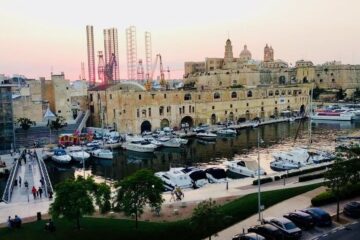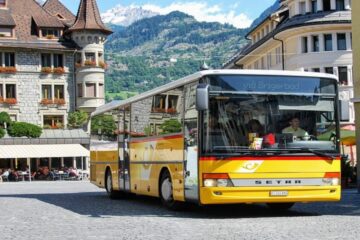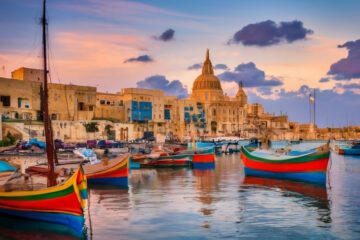Welcome to Cospicua, the fascinating city of Malta. From its ancient beginnings as an Arabic-speaking settlement known as ‘Bir Mula‘, to its modern-day status as a bustling port city, Cospicua is full of surprises. Here you can explore a unique history that includes aerial bombardment during wartime and the birthplace of one of Malta’s most influential archbishops. You’ll also discover the home of the historic Cospicua Mariners football club and some impressive underground granaries from centuries gone by. And if you’re feeling brave enough, delve into the dark past of Cospicua at the Inquisitor’s Palace! Come with us on this journey as we uncover all the intriguing facts about this captivating city!
The name “Cospicua” was originally “Bormla”, which is derived from the Arabic word “Bir Mula”
You heard right – ‘Cospicua’ was originally ‘Bormla’, which comes from the Arabic phrase ‘Bir Mula’, meaning ‘the well of the Lord’. The name was changed to Cospicua in the 17th century by the Order of Knights of Malta, who thought it was a better fit for the city’s strategic location. Being one of the oldest cities in Malta, Cospicua has an interesting history that is filled with Cospicua facts and details about its past. It’s a place that speaks to our subconscious desire for freedom with its inspiring stories and adventurous spirit. This city has been witness to many historical events, such as being the site of the first recorded use of aerial bombardment in warfare.
Cospicua was the site of the first recorded use of aerial bombardment in warfare
Experience history firsthand and discover how Cospicua (Bormla), Malta was the site of the first recorded use of aerial bombardment in warfare back in 1429. The Aragonese army used cannons to bombard the city from ships located in Grand Harbour, giving them a massive advantage over those on land. This event marked a significant milestone in warfare and set the stage for future conflicts. It is no wonder that throughout its long history, Cospicua has been an important strategic point. Next up, uncover how Cospicua was also the birthplace of Francesco Saverio Caruana, who was the Archbishop of Malta from 1741 to 1769.
Cospicua was the birthplace of Francesco Saverio Caruana, who was the Archbishop of Malta from 1741 to 1769
Francesco Saverio Caruana, born in Cospicua (Bormla), Malta, served as Archbishop of Malta from 1741 to 1769 and was a key figure in the Counter-Reformation. He played a major role in suppressing the Knights of Malta and his actions had a long-lasting impact on the Maltese people. His legacy is still felt today, with many buildings and monuments being dedicated to him throughout Cospicua and beyond. Caruana was an influential figure who helped shape the history of Malta for generations to come. As we move forward, it’s important to remember his contributions to both religion and politics during this time period. Now it’s time to explore how Cospicua also gave rise to another kind of team – the Cospicua Mariners football club that was founded in 1900!
Cospicua was the home of the Cospicua Mariners, a football club that was founded in 1900
Nestled in the heart of Bormla, Cospicua was also home to a football club with a rich history – the Cospicua Mariners. Founded in 1900, this club quickly rose to prominence and made its mark on Maltese football over the years:
- They made their debut in the Maltese Premier League in 1902, becoming one of only two teams to have done so that season.
- The team went on to win four consecutive league titles between 1905 and 1909, cementing themselves as one of Malta’s most successful clubs.
- In addition to their success domestically, they were also able to participate in international tournaments such as the Mediterranean Cup and even reached the semi-final stage of the competition in 1907.
- They have continued to be competitive through various eras and remain an important part of Maltese football today.
The Cospicua Mariners’ legacy is deeply rooted within the city itself, inspiring generations of local talent through their incredible feats and accomplishments. As we look back at this remarkable club’s past achievements, it’s clear that they played an integral role in shaping Malta’s football history.
Cospicua is home to the Cospicua Granaries, a series of underground granaries that were built in the 17th century
Hidden beneath the city of Cospicua is a treasure trove of history – the renowned Cospicua Granaries. Built-in the 17th century, these massive underground structures are one of Malta’s most impressive architectural feats and offer an insight into its past. The granaries are made up of four main chambers, each with vaulted ceilings and arched doorways. These impressive structures served as storage for wheat, maize, barley, olives, and wine from nearby farms during periods of drought or famine. Today they remain a testament to Malta’s rich heritage, offering visitors a glimpse into the island nation’s unique past.
The grandeur continues further down in Cospicua where lies the Inquisitor’s Palace – once the seat of power for the Spanish Inquisition in Malta from the 16th to 18th centuries. This two-story structure features ornately decorated rooms with intricate frescoes depicting religious scenes and sculptures that showcase some of Malta’s finest works. Visitors can explore this palace and learn about its dark history as well as appreciate its beautiful artwork. With so much to see and explore in Cospicua, it truly is an amazing destination for those seeking to uncover historical facts about Malta!
Cospicua is also home to the Inquisitor’s Palace, which was the seat of the Inquisition in Malta from the 16th to the 18th centuries
Tucked away in Cospicua lies the Inquisitor’s Palace – a two-story structure that was once the seat of power for the Spanish Inquisition in Malta from the 16th to 18th centuries. Built during Medieval times, this imposing palace has stood strong for centuries and now serves as a museum where one can explore its history. From its grand entrance hall to its intricately decorated chambers, visitors will be able to uncover facts about Cospicua’s past and discover artifacts related to the Inquisition. The palace is also home to several underground granaries, which were built in the 17th century and served as storage areas for food supplies. This unique experience offers an insight into Malta’s turbulent but fascinating history, inspiring visitors with stories of courage and strength in overcoming adversity.
Frequently Asked Questions
You may be wondering what ‘Cospicua’ means. It’s an old Maltese word that translates to ‘strong point’, a fitting name for this city of strength and bravery. Enjoy uncovering the facts about Cospicua – you won’t regret it!
Discover how Cospicua was affected by aerial bombardment during WWII. Explore the effects on its citizens and buildings. Uncover how it fought back, showing bravery and resilience to prevail. Take part in a journey of discovery and learn how this town emerged triumphant!
You’re curious about Francesco Saverio Caruana? He was a Maltese military leader, renowned for his bravery and courage. He fought to defend Malta from aerial bombardment during WWII, inspiring freedom in the hearts of many. His legacy will never be forgotten!
Discover the legacy of Cospicua’s mariners! They forged their own paths as seafarers, exploring new lands and trading with distant cultures. Their courage and ambition have left a proud heritage – inspiring others to seek freedom and adventure.
Discover how Cospicua’s granaries were used to store and protect grain, enabling mariners to provision their ships with a reliable supply. Explore the legacy of the mariners who relied on these structures to provide sustenance for their journeys in search of freedom.
Conclusion
You’ve learned a lot about Cospicua (Bormla) today. From its Arabic origin to the first recorded use of aerial bombardment and Francesco Saverio Caruana’s birth, this city has seen a lot of history. The Cospicua Mariners, Granaries, and Inquisitor’s Palace tell stories that have been passed down for centuries. This place is full of adventure and intrigue – definitely worth exploring! Whether you’re looking to learn more about Malta’s past or just take an interesting trip, Cospicua is sure to satisfy your curiosity. So what are you waiting for? Pack your bags and get ready for an unforgettable journey!

